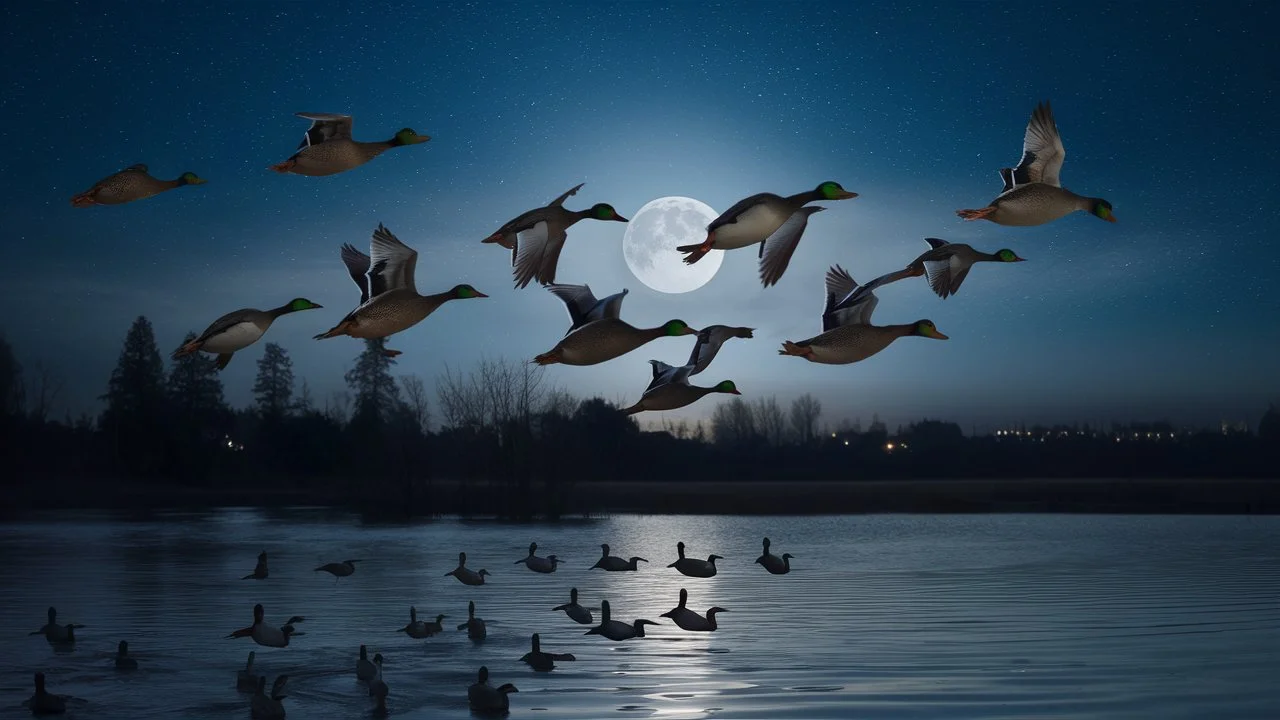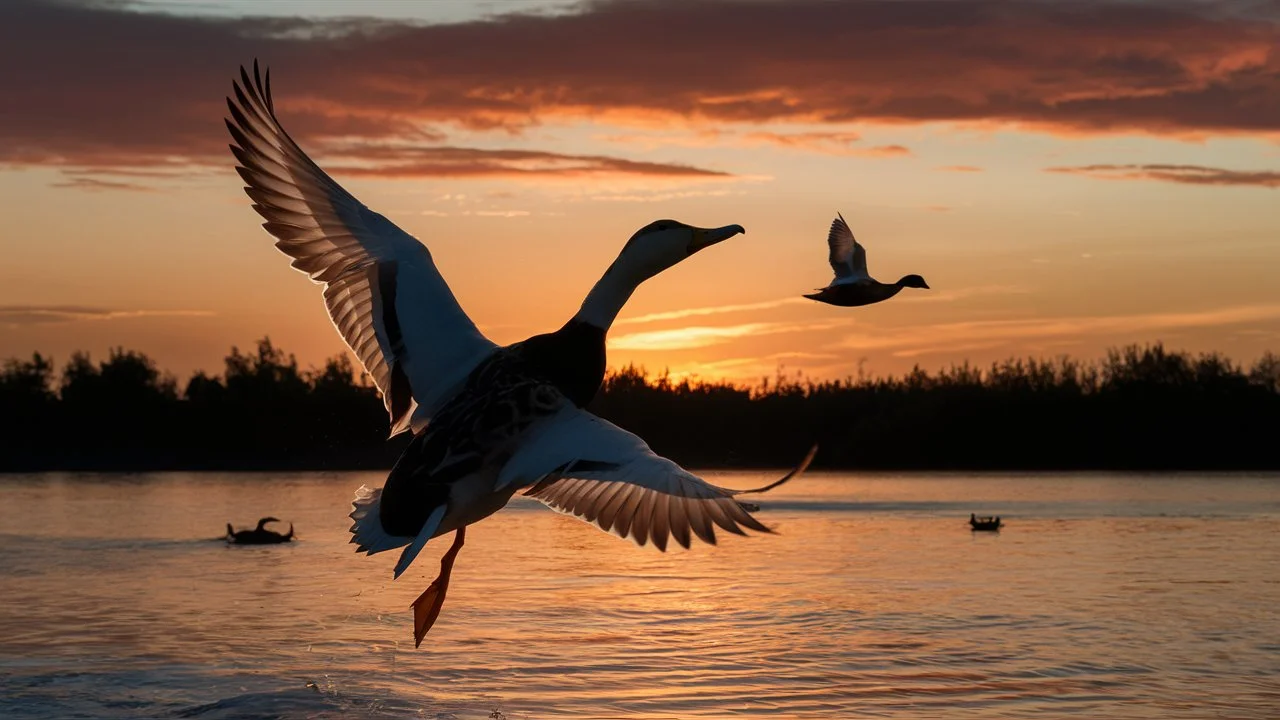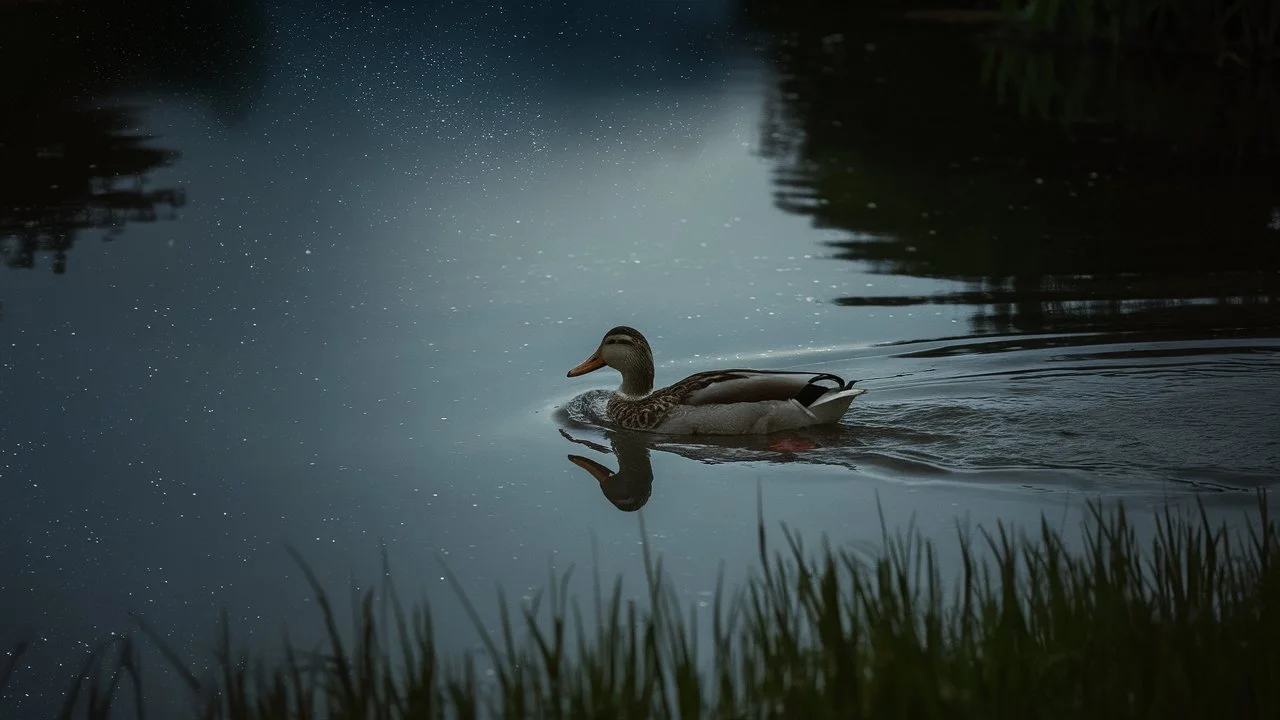Many species of ducks are known to be nocturnal or crepuscular, meaning they are active during the night or twilight hours. Night flying is especially common during migration periods, but ducks may also take to the skies after dark for feeding, avoiding predators, or finding new habitats.
In this article, we will explore the reasons why ducks fly at night, the benefits of their nocturnal journeys, and some interesting facts about their nighttime behavior. Whether you’re a bird enthusiast or just curious, understanding the nocturnal habits of ducks can give you a deeper appreciation for these fascinating birds.
Yes, ducks do fly at night. Many species of ducks are known to be active during nighttime or twilight hours. They often undertake night flights during migration to cover long distances, avoid daytime predators and benefit from cooler temperatures. Night flying also helps them navigate using the stars and moonlight. Additionally, ducks may fly at night for feeding and moving between roosting and feeding areas.
Do Ducks Fly at Night?
Many species of ducks are nocturnal or crepuscular, meaning they are active during the night or twilight hours. Night flying is especially common during migration periods.
Ducks might fly at night for several reasons:
1. Migration
- Avoid Predators: Flying at night helps ducks avoid predators that are more active during the day.
- Cooler Temperatures: The cooler nighttime temperatures are more favorable for long-distance flights, reducing the risk of overheating.
- Navigation: Ducks use the stars and the moon to navigate during their long migratory journeys.
2. Feeding Habits
- Some ducks prefer to feed at night, especially in areas where human activity or predators may disturb them during the day.
3. Breeding Season
- During the breeding season, some ducks might fly at night to find mates or suitable nesting sites without daytime disturbances.

Examples of Night-Flying Ducks
- Mallards: Known to migrate at night.
- Teals: Often migrate at night, utilizing the cover of darkness for protection.
- Northern Pintails: Frequently observed flying at night during migration seasons.
Related reading: Can Ducks See in the Dark?
What Time Do Ducks Fly at Night?
Ducks can fly at various times during the night, but their activity is often concentrated around certain periods. Here are the typical times when ducks are most likely to fly at night:
1. Dusk (Twilight)
- Evening Flight: Ducks often begin their nocturnal flights around dusk, just as the sun sets and the sky starts to darken. This time provides enough light for initial navigation while also offering the cover of darkness soon after.
2. Early Night
- First Few Hours After Sunset: The first few hours after sunset are a common time for ducks to be active. During this period, they take advantage of the relative quiet and lower risk of daytime predators.
3. Midnight to Early Morning
- Late Night to Pre-Dawn: Ducks are also known to fly in the late night hours and continue into the early morning before dawn. These hours are particularly favored during migration, as the night sky helps with navigation and the cooler temperatures make long flights less strenuous.
Factors Influencing Night Flights
- Migration Patterns: Ducks migrate during the night to cover long distances while avoiding predators.
- Feeding Habits: Some ducks might fly at night to find feeding grounds that are safer or less disturbed by human activity.
- Weather Conditions: Clear nights with good visibility and favorable wind conditions are ideal for night flights.
- Moonlight: Ducks might prefer nights with some moonlight, which helps them navigate more effectively.
How Long Do Ducks Fly at Night?
The duration of a duck’s nocturnal flight can vary depending on several factors such as migration distance, weather conditions, and the specific species of duck. Here are some general insights into how long ducks might fly at night:
1. Migration Flights
- Long-Distance Flights: During migration, ducks can fly for several hours at night. These flights are often extensive, covering hundreds of miles in a single night. The exact duration can range from 4 to 8 hours or more, depending on the distance to the next resting spot and weather conditions.
- Nonstop Flights: Some species are capable of flying nonstop for up to 12 hours or more during peak migration periods.
2. Feeding and Local Movements
- Shorter Flights: When ducks are flying at night to find feeding grounds or to move between roosting sites and feeding areas, their flights are typically shorter. These flights might last from a few minutes to an hour, depending on the distance between locations.
Factors Influencing Flight Duration
- Species of Duck: Different species have different flight capabilities. For example, Mallards and Teals are known for their long migratory flights.
- Weather Conditions: Favorable weather can extend flight duration, while poor weather might shorten it or delay departure.
- Wind Conditions: Tailwinds can help ducks fly longer distances more quickly, while headwinds might reduce their flight range.
- Energy Reserves: Ducks need adequate fat reserves for long flights. They will rest and refuel if their energy levels are low.
- Navigation: Clear skies with visible stars and moonlight can help ducks navigate better and fly longer.
Examples of Night Flight Duration
- Mallards: Can fly for several hours non-stop during migration.
- Northern Pintails: Known for long nocturnal flights during migration, sometimes covering up to 600 miles in one night.
- Teals: Smaller species like the Green-winged Teal can also undertake extended nocturnal flights during migration.
Do Ducks Fly at Night in the Summer?

Yes, ducks do fly at night in the summer, although the reasons and frequency might differ from their nocturnal flights during migration seasons. Here are some key points to consider:
1. Breeding Season Movements
- Local Movements: During the summer, which is typically the breeding season for many duck species, ducks might fly at night to move between feeding and nesting areas.
- Avoiding Predators: Night flights can help ducks avoid daytime predators, especially when they are moving vulnerable ducklings.
2. Feeding
- Night Feeding: In some regions, ducks might prefer feeding at night to avoid the heat of the day and human disturbances.
- Water Sources: Ducks may fly to different water sources at night, especially if they are in areas where water levels fluctuate due to summer conditions.
3. Avoiding Heat
- Cooler Temperatures: Flying at night allows ducks to avoid the high daytime temperatures typical of summer, which can be exhausting and dehydrating.
4. Habitat Changes
- Seasonal Wetlands: In some areas, summer can bring changes in wetland habitats. Ducks might move at night to find more suitable environments as water levels rise or fall.
Differences from Migration
- Shorter Distances: Unlike migration periods where ducks might fly hundreds of miles in one night, summer flights are generally shorter and focused on local needs.
- Less Frequent Long Flights: Long-distance nocturnal flights are less common in summer unless driven by extreme weather changes or habitat needs.
Examples of Summer Night Flights
- Mallards: Known to fly between feeding and nesting sites at night during the summer.
- Teals: May move at night to avoid daytime heat and find optimal feeding grounds.
- Wood Ducks: Often fly at night to stay near their preferred wooded wetlands.
Do Ducks Fly High in the Sky?
Yes, ducks can fly high in the sky, particularly during migration. The altitude at which ducks fly varies based on several factors, including species, weather conditions, and the purpose of their flight. Here are some key points:
1. Migration Flights
- High Altitude: During long-distance migrations, ducks often fly at high altitudes to take advantage of favorable wind currents and avoid predators. Some species have been recorded flying at altitudes of up to 6,000 feet (about 1,800 meters) or higher.
- Efficiency: Flying at higher altitudes can be more energy-efficient, especially when tailwinds are present. It also allows ducks to cover longer distances without needing to stop frequently.
2. Daily Movements
- Lower Altitude: For shorter, daily flights between feeding and resting areas, ducks typically fly at lower altitudes. These flights usually stay below 1,000 feet (about 300 meters).
3. Factors Influencing Flight Altitude
- Weather Conditions: Ducks may fly higher to avoid adverse weather conditions like storms or strong winds at lower altitudes.
- Landscape: The surrounding landscape, such as mountains or tall buildings, can influence the altitude at which ducks fly.
- Time of Day: Ducks might fly at different altitudes depending on the time of day, with some species flying higher during migration at night.
Examples of High-Flying Ducks
- Mallards: Known to fly at altitudes ranging from a few hundred to several thousand feet, especially during migration.
- Northern Pintails: Have been recorded flying at altitudes up to 6,000 feet during long migratory journeys.
- Teals: Smaller ducks like the Green-winged Teal also migrate at high altitudes, utilizing wind currents for more efficient travel.
Conclusion
Ducks do indeed fly at night, primarily for migration, feeding, and avoiding predators. Their nocturnal flights are strategic, taking advantage of cooler temperatures, reduced predation, and optimal navigation conditions provided by the night sky. Whether for long migratory journeys or local movements, night flying is an essential part of a duck’s behavior. Understanding these nocturnal habits highlights the adaptability and resilience of ducks, showcasing their remarkable ability to thrive in diverse environments and conditions.

